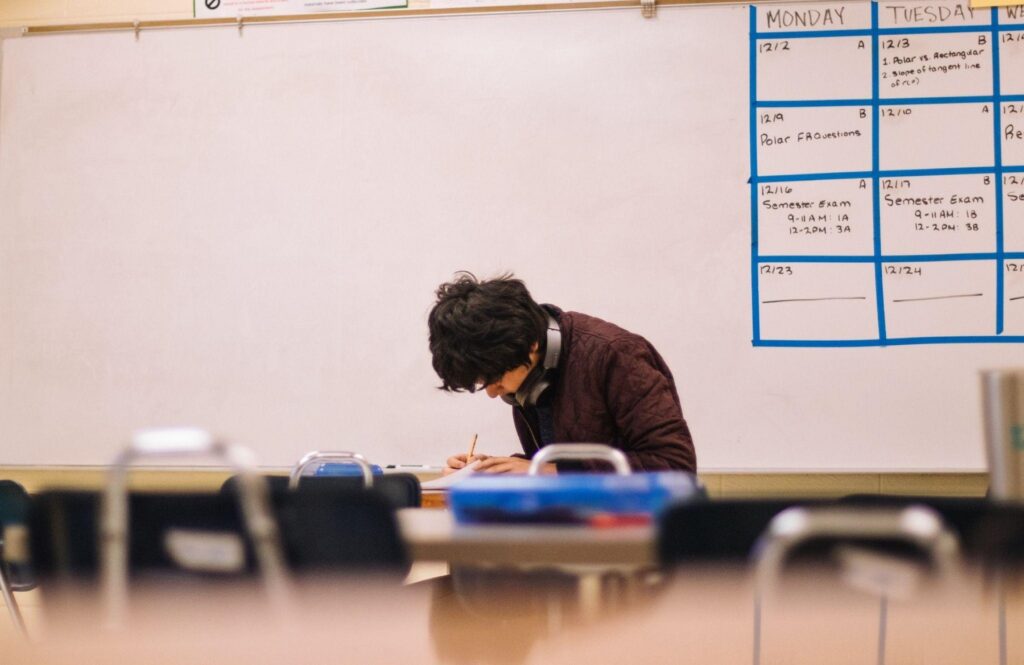Students’ engagement in class or outside class activities is the process of actively participating in and contributing to educational experiences. This includes attending class, completing assignments, working collaboratively, participating in discussions and activities, and taking an interest in the subject matter. Outside of the classroom, engagement can include extracurricular activities such as clubs, sports teams, volunteering, or internships. Engagement is an important part of student learning and development, as it helps promote critical thinking, self-confidence, Career Tips and connections with peers and educators.
Investigating a poll of over 2,000 participants, new data has been uncovered that reveals teaching strategies that can foster student engagement regardless of the learning setting. Create engaging activities and games that help students stay motivated during exams and foster a positive learning environment. Through the collection of qualitative and quantitative survey results, the following five educational techniques have been ranked highly for encouraging engagement.
Is Student Engagement The Same?
Student involvement has traditionally shown development and advancement, and in the current pandemic climate, it is going to be critical for both educational and emotional-social recompense.
The level of student engagement has changed significantly over time. In the past, students were more likely to passively sit in their seats and take in information from their teachers. Students were expected to behave and follow directions with little to no input into what was being taught or discussed.
However, modern students are much more engaged in the learning process. They are more actively involved in their education, offering insights and opinions, engaging in collaborative learning, and taking ownership of their learning by setting goals, tracking progress, and creating action plans for themselves. Interactive elements like quizzes, games, and simulations in e-learning education can significantly boost student engagement and retention. This increased level of engagement means students are more actively participating in their education, leading to more meaningful learning experiences and better knowledge retention.
The Importance of Student Engagement
Student engagement is an important part of the educational process and can have a significant impact on academic success. When students are engaged with learning, they are more likely to be motivated, participate in class, develop critical thinking skills, and show improved grades.
For example, teachers who create an engaging classroom environment are more likely to see higher levels of student achievement. An engaging classroom environment could include interactive lessons, creative projects, discussions about real-world problems, and other activities that help students apply the material.
Similarly, providing meaningful feedback to students on their assignments and presenting them with challenging tasks helps to keep them engaged and motivated. This can lead to increased levels of learning, improved grades, and better retention of knowledge.
Strategies To Boost Student Engagement

1. Get students involved with experiential learning
Experiential learning is a great way to engage students in the classroom and get them excited about their studies. By providing an engaging and interactive learning experience, students will become more active participants in their education. This can be accomplished through simulations, field trips, role-playing activities, and hands-on projects.
2. Incorporate technology in the classroom
Technology has revolutionized classrooms and greatly enhanced student engagement. By incorporating technology into students’ learning, teachers can create an interactive and immersive environment for their students. This can include E-Learning applications, educational games, and online activities.
3. Establish rules and hands-on learning
Establishing rules and expectations gives students structure to their learning and allows them to understand what is expected of them. Having a list of rules that are explicitly laid out, as well as clearly outlined consequences, can help students stay on track and stay engaged in the classroom.
Learning by doing was found to be the fourth most effective way to engage students and received a score of 4.27 out of 5. This was seen particularly in specialized subject areas such as visual and performing arts and computer science and technology. Practicing hands-on learning was highly rated by all grade levels for its power to engage students, particularly when it came to elementary school teachers. It was the second-highest-rated practice for enhancing engagement.
4. Utilize collaboration and group work
Group work can be a powerful tool for increasing engagement in the classroom. When students are working together on an assignment or project, they are more likely to be actively participating, ask questions, and be creative. Allowing students to collaborate and discuss their ideas is also a great way to foster a sense of community and involvement in the classroom.
5. Use diverse activities and assessments
Incorporating a variety of activities and assessments allows students to apply their knowledge in different ways, which helps to keep them engaged throughout their learning process. Activities such as debates, presentations, research projects, and creative problem-solving can be used to keep students motivated and ensure that all students are given an equal opportunity to engage.
Tips for Students to Be Engaged
- Student engagement can help boost motivation and drive to excel academically.
- By taking part in activities such as group discussions, volunteer work, or student clubs, students can gain a better understanding of the subject material, build problem-solving skills, and develop meaningful relationships with their peers.
- Engagement also encourages students to be more independent and take ownership of their learning process.
- Engaging with peers and professors cultivates critical thinking and communication abilities.
- Participation in extracurricular activities can also provide leadership opportunities, which can help boost skills in teamwork, decision-making, and presentation.
Conclusion
It can be concluded that student engagement is a very important part of a student to grow. Not just students, but teachers should also be equally responsible to engage students as not everyone is confident in being comfortable in a short period. A strong parent-student relationship can foster a positive learning environment and significantly boost student engagement. Extracurricular activities are as important as academic learning.
Author’s Bio:
Hi I am Isla Vonhoff, a writer/blogger/content creator with a passion for Education. With years of experience in, I have been engulfed in it. I have developed a unique perspective on sharing knowledge, and am dedicated to this craft. If you want to check out my other work, some of my recent works are also posted on CDR Writers Australia.

